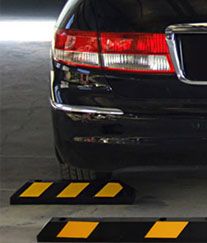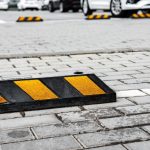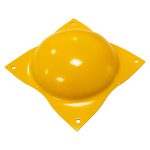Introduction
Definition of speed bumps and humps
Speed bumps and humps are traffic calming devices that are designed to reduce the speed of vehicles in specific areas. They are typically installed on roads or parking lots to slow down drivers and improve safety. Speed bumps are raised sections of pavement that are usually shorter in length, while speed humps are longer and have a gentler slope. Both types of devices serve the same purpose of slowing down vehicles, but they differ in terms of design and effectiveness. Proper installation of speed bumps and humps is crucial to ensure that they function as intended and effectively slow down traffic.
Purpose of speed bumps and humps
The purpose of speed bumps and humps is to slow down vehicles and ensure the safety of pedestrians and drivers. These traffic calming measures are installed in areas where speed needs to be controlled, such as residential neighborhoods, school zones, and parking lots. By forcing drivers to reduce their speed, speed bumps and humps help prevent accidents and promote a safer environment. Additionally, they serve as a visual reminder for drivers to be cautious and attentive while navigating through these areas. Proper installation of speed bumps and humps is essential to ensure their effectiveness and minimize any potential damage to vehicles. It is crucial to follow established guidelines and regulations to achieve the desired results and maintain the integrity of these traffic calming devices.
Importance of proper installation
Proper installation of speed bumps and humps is of utmost importance for ensuring road safety and minimizing accidents. When speed bumps and humps are not installed correctly, they can pose serious risks to both drivers and pedestrians. A well-installed speed bump or hump helps to control and reduce vehicle speed, forcing drivers to slow down and be more cautious. This is especially crucial in areas with heavy pedestrian traffic, such as schools, residential neighborhoods, and parking lots. Additionally, proper installation ensures that the speed bumps and humps are durable and long-lasting, reducing the need for frequent repairs and maintenance. Overall, the importance of proper installation cannot be overstated as it plays a vital role in creating safer road environments and protecting the well-being of road users.
Benefits of Proper Installation
Enhanced traffic safety
Proper installation of speed bumps and humps plays a crucial role in enhancing traffic safety. These traffic calming measures are designed to slow down vehicles and promote safer driving habits. By strategically placing speed bumps and humps in areas with high pedestrian activity or near schools, the risk of accidents and injuries can be significantly reduced. Additionally, these installations help to enforce speed limits and discourage reckless driving, creating a safer environment for both motorists and pedestrians. It is important for municipalities and property owners to prioritize the correct installation of speed bumps and humps to ensure the utmost safety on the roads.
Reduced vehicle speed
Reduced vehicle speed is one of the key benefits of properly installing speed bumps and humps. These traffic calming measures are designed to slow down vehicles, promoting safer driving conditions in areas with high pedestrian activity or where speeding is a concern. By forcing drivers to reduce their speed, speed bumps and humps help prevent accidents and potential injuries, especially in residential areas and near schools. Additionally, lower vehicle speeds contribute to quieter streets and reduced noise pollution, creating a more peaceful and livable environment for residents. Overall, the proper installation of speed bumps and humps plays a crucial role in maintaining road safety and enhancing the quality of life in communities.
Improved pedestrian safety
Proper installation of speed bumps and humps plays a crucial role in improving pedestrian safety. These traffic calming measures help to slow down vehicles in areas with high foot traffic, reducing the risk of accidents and injuries. By forcing drivers to reduce their speed, speed bumps and humps create a safer environment for pedestrians to cross the road or walk alongside it. Additionally, they serve as a visual reminder for drivers to be more cautious and attentive, further enhancing pedestrian safety. Therefore, it is essential to ensure the correct installation of speed bumps and humps to maximize their effectiveness in protecting pedestrians.
Proper Installation Guidelines
Choosing the right location
Choosing the right location for speed bumps and humps is crucial to ensuring their effectiveness. It is important to consider factors such as traffic volume, speed limits, and accident-prone areas when determining where to install these traffic calming devices. Placing speed bumps and humps in strategic locations can help to reduce speeding and improve overall road safety. Additionally, it is essential to consult with traffic engineers and local authorities to ensure compliance with regulations and to obtain the necessary permits for installation. By carefully selecting the right locations for speed bumps and humps, communities can create safer and more efficient roadways.
Determining the appropriate size and shape
Determining the appropriate size and shape of speed bumps and humps is crucial in ensuring their effectiveness and safety. The size and shape of these traffic calming measures should be based on various factors such as the speed limit of the road, the volume of traffic, and the type of vehicles using the road. For instance, on high-speed roads, larger and more pronounced speed bumps may be necessary to effectively slow down vehicles. On the other hand, in residential areas with lower speed limits, smaller and less aggressive speed humps may be sufficient. Additionally, considering the size and turning radius of the vehicles using the road is important to prevent any inconvenience or damage to vehicles. By carefully determining the appropriate size and shape of speed bumps and humps, we can ensure that they serve their purpose of promoting safer and more controlled traffic flow.
Ensuring proper visibility
Ensuring proper visibility is crucial when it comes to the installation of speed bumps and humps. It is important to consider the visibility of these traffic calming measures to ensure that they are effective in slowing down vehicles. Proper visibility allows drivers to see the speed bumps and humps ahead of time, giving them ample opportunity to reduce their speed. This not only helps in preventing accidents but also promotes safer driving habits. Additionally, proper visibility of speed bumps and humps can also prevent damage to vehicles, as drivers are more likely to notice and navigate them safely. Therefore, it is essential to prioritize proper visibility during the installation process to maximize the effectiveness of speed bumps and humps in controlling traffic speed.
Common Installation Mistakes
Improper height or slope
Improper height or slope of speed bumps and humps can have significant consequences. If the height is too low or the slope is too gentle, vehicles may not slow down enough, defeating the purpose of installing them. On the other hand, if the height is too high or the slope is too steep, it can cause discomfort and damage to vehicles, leading to unnecessary maintenance and repair costs. Therefore, it is crucial to ensure that speed bumps and humps are installed with the correct height and slope to effectively control speed and promote road safety.
Inadequate signage
Inadequate signage is a common problem associated with speed bumps and humps. Without clear and visible signage, drivers may not be aware of the presence of these traffic calming measures, leading to potential accidents and confusion. Proper signage is crucial to inform drivers about the upcoming speed bumps and humps, allowing them to adjust their speed accordingly. It also helps in ensuring the effectiveness of these traffic calming devices by promoting compliance and awareness among motorists. Therefore, it is essential to prioritize the installation of proper signage alongside speed bumps and humps to enhance road safety and prevent any potential hazards.
Incorrect spacing
Incorrect spacing is a common issue when it comes to the installation of speed bumps and humps. It is crucial to ensure that the spacing between each speed bump or hump is accurate and consistent. If the spacing is too close, drivers may not have enough time to slow down between each obstacle, leading to a bumpy and uncomfortable ride. On the other hand, if the spacing is too far apart, the intended purpose of the speed bumps and humps, which is to slow down vehicles, may be compromised. Therefore, proper attention should be given to the spacing during the installation process to ensure the effectiveness and functionality of speed bumps and humps.
Consequences of Improper Installation
Increased accidents and injuries
Increased accidents and injuries are a significant concern when it comes to the proper installation of speed bumps and humps. These traffic calming measures are designed to slow down vehicles and improve safety on the roads. However, if speed bumps and humps are not installed correctly, they can actually lead to more accidents and injuries. Improperly installed speed bumps may cause drivers to lose control of their vehicles, especially at high speeds. This can result in collisions, vehicle damage, and even serious injuries to drivers, passengers, and pedestrians. Therefore, it is crucial to ensure that speed bumps and humps are installed according to proper guidelines and standards to minimize the risk of accidents and injuries.
Vehicle damage
Proper installation of speed bumps and humps is crucial to prevent vehicle damage. Speed bumps and humps are designed to slow down vehicles and improve safety on roads, but if they are not installed correctly, they can actually cause harm to vehicles. When speed bumps and humps are not properly constructed, they can create jolts and impacts that can damage the suspension, tires, and alignment of vehicles. This can lead to expensive repairs and inconvenience for vehicle owners. Therefore, it is essential to ensure that speed bumps and humps are installed following the recommended guidelines and standards to minimize the risk of vehicle damage.
Negative impact on traffic flow
The improper installation of speed bumps and humps can have a negative impact on traffic flow. When speed bumps and humps are not placed strategically or are of incorrect dimensions, they can cause unnecessary traffic congestion and delays. Motorists may have to slow down abruptly, leading to a stop-and-go traffic pattern, which can be frustrating for drivers and result in longer travel times. Additionally, improperly installed speed bumps and humps can hinder the smooth flow of traffic, especially on busy roads or intersections, as drivers may have to navigate around them, disrupting the overall flow. It is crucial to ensure that speed bumps and humps are installed correctly to minimize any negative effects on traffic flow and maintain a safe and efficient road network.
Conclusion
Summary of the importance of proper installation
Proper installation of speed bumps and humps is crucial for ensuring road safety and reducing accidents. When speed bumps and humps are not installed correctly, they can cause damage to vehicles and pose a risk to pedestrians. By following proper installation guidelines, such as determining the appropriate height and width, ensuring proper signage, and placing them in strategic locations, the effectiveness of speed bumps and humps can be maximized. Additionally, proper installation can help prevent drivers from speeding and promote better traffic flow. Therefore, it is essential to prioritize the proper installation of speed bumps and humps to create safer road environments.
Call to action for proper installation practices
Proper installation practices for speed bumps and humps are crucial for ensuring the safety and effectiveness of these traffic calming measures. It is important for local authorities, road engineers, and contractors to adhere to established guidelines and standards when installing speed bumps and humps. This includes considering factors such as the appropriate height, width, and spacing of the bumps or humps, as well as their location and visibility to drivers. By following proper installation practices, we can enhance road safety, reduce speeding, and create a more pedestrian-friendly environment. Let’s work together to ensure that speed bumps and humps are installed correctly and serve their intended purpose of improving traffic flow and protecting road users.
Future considerations for speed bump and hump installations
In addition to the current considerations for speed bump and hump installations, it is important to also think about future considerations. As technology continues to advance, there may be new innovations in speed bump and hump design that can enhance their effectiveness. For example, the development of smart speed bumps that can detect speeding vehicles and alert authorities could greatly improve road safety. Additionally, future considerations should also include the potential impact of autonomous vehicles on speed bump and hump installations. As self-driving cars become more prevalent, it will be important to ensure that speed bumps and humps are designed in a way that does not impede their functionality. By considering these future factors, we can ensure that speed bump and hump installations remain effective and relevant in the years to come.









